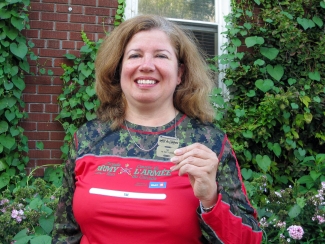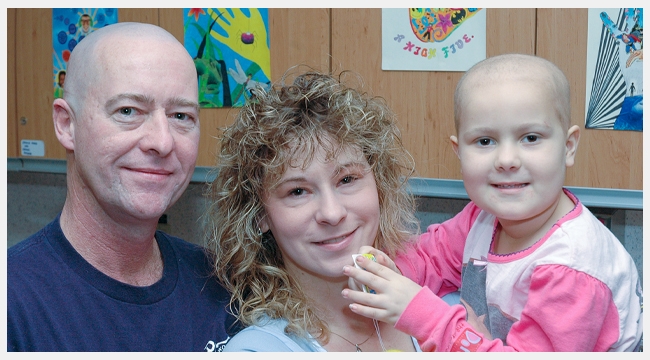Plasma donations essential to fight rare disease
Linda Paul continues to recover from a rare immune disorder
Linda Paul has always been an active person. For years, she walked to work, always took the stairs, rock-climbed regularly and went swing dancing a few times a week. In 2009, however, Linda was stopped in her tracks by a mysterious illness.
“I suddenly became paralyzed from the waist down, and had little feeling in my arms and face,” she says. “It was terrifying.”
In hospital, doctors diagnosed her with Chronic Inflammatory Demyelinating Polyneuropathy (CIDP), an exceedingly rare immunological disease. CIDP causes the body’s immune system to attack the nervous system, sometimes with irreversible consequences. The cause of the disease is not clear, but many sufferers respond well when treated with immunoglobulin. Made from donated plasma, immuno globulin contains active elements of donors’ immune systems. Fortunately, Linda began to recover quickly once doctors administered immunoglobulin.
“Within hours, I could move my feet again,” she recalls. “Within days, I could do a short, stumbling walk. I’ve been on the road to recovery ever since.”
New plasma centres will help meet growing patient need
Linda is just one of many patients across Canada who rely on donated plasma. Demand for plasma and plasma-derived medications is rapidly increasing, as they are used to effectively treat a growing number of immune deficiencies, bleeding disorders, cancers, and kidney and liver diseases.
Plasma to save a toddler’s life
To meet rising demand, Canadian Blood Services opened a new plasma centre in Sudbury, Ont. in Aug. 2020; others are set to open in Lethbridge and Kelowna next year. Thanks to the generosity of donors, the centres can help transform the lives of many more patients like Linda.
A thousand plasma donations and counting
Have you recovered from COVID-19? Consider donating plasma for clinical trials
The road to recovery has been long and difficult for Linda. She had no choice but to retire from her job as a manager at the Canada Border Services Agency. After several years of physiotherapy and exercise, however, Linda was finally able to get back on the dance floor.
“I worked very hard so that I can swing dance again,” Linda Paul says. “It’s not quite the same as before, but being able to dance again means everything to me.”

Linda Paul swing dancing in January 2020
Linda also returned to another activity that’s near and dear to her heart: volunteering. For years, she was a Big Sister, and later devoted some of her time and energy to a local school. More recently, she has volunteered with GBS/CIDP Foundation (GBS — Guillain Barré Syndrome — is another immune disease) and at a seniors’ residence.
“Giving back to the community makes me feel good,” says Linda.

Linda Paul continues to be as physically active as possible, and completed the 2015, 2016 and 2017 Army Run 5k events with the help of her walker.
A decade after contracting CIPD, Linda’s recovery regime continues to include regular exercise and immunoglobulin treatments. She has a special appreciation people who donate plasma.
“I had the good fortune of meeting some donors at one point, and I felt like hugging them,” she says. “They were saving my life.”
Becoming a plasma or blood donor can make a lifesaving difference to patients across Canada with CIDP and many other conditions. To book an appointment, visit blood.ca/donate, download the GiveBlood app or call 1 888 2 DONATE.



